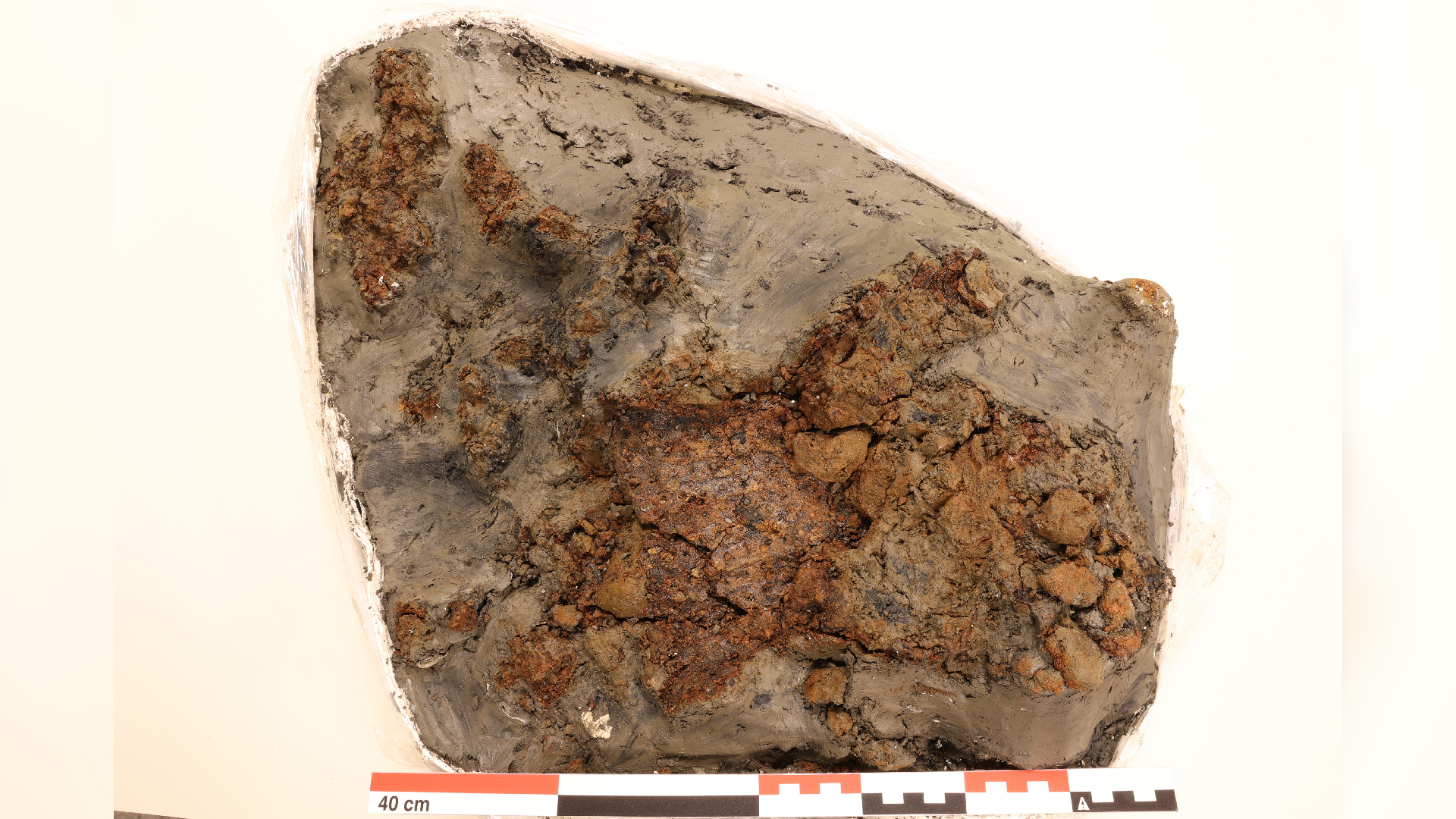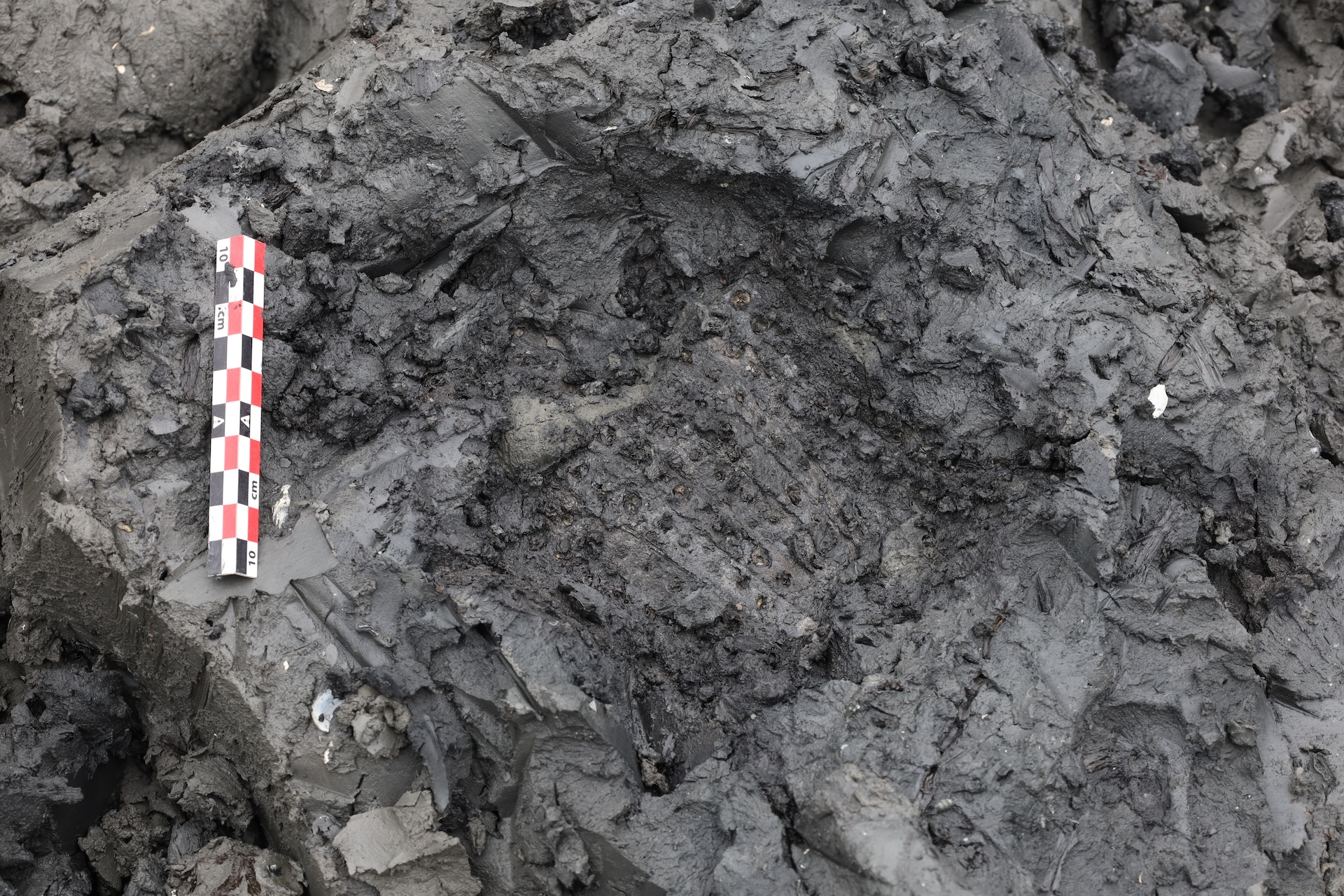Remains of 14th-century gauntlet discovered in Oslo's medieval harbor
Archaeologists excavating Oslo's medieval harbor have unearthed the remnants of a 14th-century gauntlet.

An excavation in Oslo's former harbor has yielded the remains of a rare iron gauntlet, likely lost by a medieval knight in the 14th century. Archaeologists with the Norwegian Institute for Cultural Heritage Research (NIKU) discovered the piece of armor while metal detecting as part of their investigation of the old harbor area.
Oslo was founded as a medieval city and harbor around 1050. But in 1624, after a fire ravaged the city, the Norwegian king Christian IV moved Oslo across the bay. In the centuries since, development of the old harbor, including the building of piers and warehouses, steadily expanded outward into the bay as the ocean retreated.
Archaeologists have undertaken two major excavations of the old harbor area of Oslo, first between 2019 and 2020 and then from 2022 to 2023. According to NIKU archaeologist Håvard Hegdal, their discoveries include many discarded objects from the medieval and Renaissance periods, including shipwrecks, ceramics, footwear, ropes, the remains of butchered animals and a large number of weapons.
"The gauntlet was found some 40 meters [131 feet] out in the harbor," Hegdal told Live Science in an email. "So it could only have been dropped from a ship, though we have no good explanation how something like that could have happened."
Usually made out of iron, these metal gloves, which were used to protect a person's hands and wrists, were invented in the early 14th century, when European soldiers and knights upgraded from chain mail to plate armor. But archaeological discoveries of gauntlets are rare, particularly early examples, because metal corrodes quickly and easily in the ground and because iron was often reused and reforged in the Middle Ages. However, a well-preserved right-handed gauntlet from the 14th century was recently found in Switzerland.
Related: 'Incredibly rare' 2nd-century Roman armor pieced together like an 'ancient jigsaw puzzle'

The Oslo gauntlet may date to the same century. "It was found more or less directly below an area-wide layer of blue clay which must have come from a significant quick clay slide which we have dated to about 1380," Hegdal said. "The gauntlet might have been lost in relation to the landslide itself and the resulting waves."
Get the world’s most fascinating discoveries delivered straight to your inbox.
Little of the Oslo gauntlet remains, however. It is largely an imprint of the armor, with remnants of small nails and a possible buckle that the archaeologists were able to see in X-rays. And it is unknown whether the gauntlet was new or old at the time it was lost. Immediately following the Black Death, commercial goods that were previously scarce — such as plate armor — became more common due to the decimation of the population, Hegdal said. "The gauntlet might simply have been rusted and broken from neglect and tossed away."

But NIKU's excavations have also revealed many weapons — daggers and knives for the most part, but also swords, spears and axes. "Our hypothesis is that these were discarded due to a prohibition on weapons or long blades, based on similar regulations in other medieval cities," Hegdal said, which might be an indication of a form of customs control in the harbor.
Fully understanding medieval Oslo, though, is complicated. Many Norwegian documents were lost in a fire in 1728, and Oslo's medieval city laws are not preserved. But NIKU's archaeological excavation, which is due to wrap up in November of this year, may shed new light on Oslo's medieval past.

Kristina Killgrove is a staff writer at Live Science with a focus on archaeology and paleoanthropology news. Her articles have also appeared in venues such as Forbes, Smithsonian, and Mental Floss. Kristina holds a Ph.D. in biological anthropology and an M.A. in classical archaeology from the University of North Carolina, as well as a B.A. in Latin from the University of Virginia, and she was formerly a university professor and researcher. She has received awards from the Society for American Archaeology and the American Anthropological Association for her science writing.


